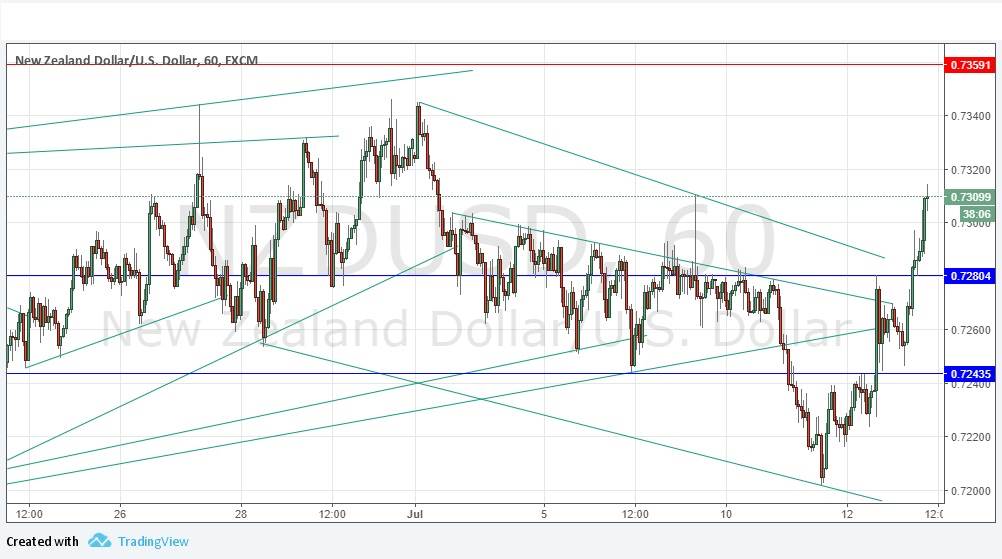Yesterday’s signals were not triggered as the bearish price action took place a little way above the anticipated resistance level at 0.7270.
Today’s NZD/USD Signals
Risk 0.50%
Trades must be taken from 8am New York time until 5pm Tokyo time, during the next 24-hour period only.
Long Trade 1
- Go long following a bullish price action reversal on the H1 time frame immediately upon the next touch of 0.7280.
- Place the stop loss 1 pip below the local swing low.
- Adjust the stop loss to break even once the trade is 20 pips in profit.
- Remove 50% of the position as profit when the trade is 20 pips in profit and leave the remainder of the position to run.
Short Trade 1
- Go short following a bearish price action reversal on the H1 time frame immediately upon the next touch of 0.7359.
- Place the stop loss 1 pip above the local swing high.
- Adjust the stop loss to break even once the trade is 20 pips in profit.
- Remove 50% of the position as profit when the trade is 20 pips in profit and leave the remainder of the position to run.
The best method to identify a classic “price action reversal” is for an hourly candle to close, such as a pin bar, a doji, an outside or even just an engulfing candle with a higher close. You can exploit these levels or zones by watching the price action that occurs at the given levels.
NZD/USD Analysis
There has been a very bullish change to the overall picture. The price has shot up, breaking strongly past no fewer than three trend lines which had been dominating the situation technically. On the way up, the price also printed two new support levels. The NZD, along with other Asian currencies, has been one of the prime beneficiaries of the recent U.S. Dollar weakness.
The short-term outlook is bullish, but the price may be held, at least for a while, by the minor double top which may be forming at 0.7310.
There is nothing due today concerning the NZD. Regarding the USD, there will be releases of PPI and Unemployment Claims data at 1:30pm London time, followed at 3pm by the testimony of the Chair of the Federal Reserve before Congress.
